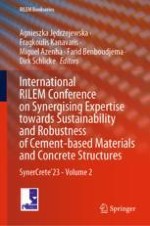This book highlights the latest advances, innovations, and applications in cement-based materials (CBM) and concrete structures, as presented by leading international researchers and engineers at the International RILEM Conference on synergizing expertise toward sustainability and robustness of CBM and concrete structures (SynerCrete), held in Milos Island, Greece, on June 14-16, 2023. The aim of the conference was to discuss and arouse progress in research, development, and application of CBM and structural concrete through combination of expertise from distinct fields of knowledge, such as performance-based design, 3D modeling for analysis/design, building information modeling, and even robotics, while keeping focus on multiscale approaches at time and spatial levels. It covers a diverse range of topics concerning alternative concrete formulations for adaptation to climate change, performance-based and multiphysics/multiscale design and innovative testing, structural health monitoring and maintenance management, integral BIM-based planning, and resource-responsible building. The contributions, which were selected by means of a rigorous international peer-review process, present a wealth of exciting ideas that will open novel research directions and foster new multidisciplinary collaborations. The two volumes encompass more than 200 original contributions in the field.
